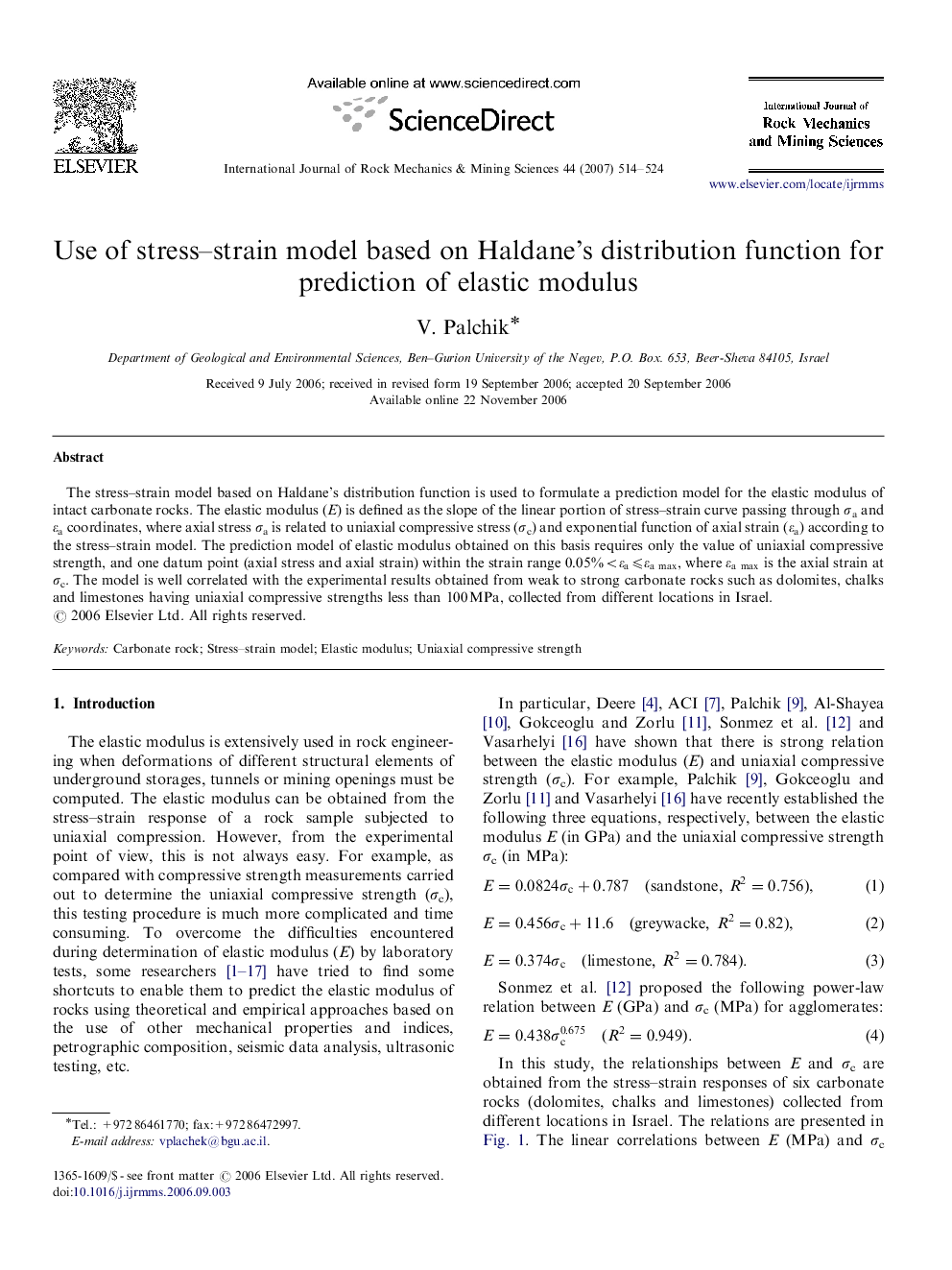| Article ID | Journal | Published Year | Pages | File Type |
|---|---|---|---|---|
| 810326 | International Journal of Rock Mechanics and Mining Sciences | 2007 | 11 Pages |
The stress–strain model based on Haldane's distribution function is used to formulate a prediction model for the elastic modulus of intact carbonate rocks. The elastic modulus (E) is defined as the slope of the linear portion of stress–strain curve passing through σa and εa coordinates, where axial stress σa is related to uniaxial compressive stress (σc) and exponential function of axial strain (εa) according to the stress–strain model. The prediction model of elastic modulus obtained on this basis requires only the value of uniaxial compressive strength, and one datum point (axial stress and axial strain) within the strain range 0.05%<εa⩽εamax, where εamax is the axial strain at σc. The model is well correlated with the experimental results obtained from weak to strong carbonate rocks such as dolomites, chalks and limestones having uniaxial compressive strengths less than 100 MPa, collected from different locations in Israel.
